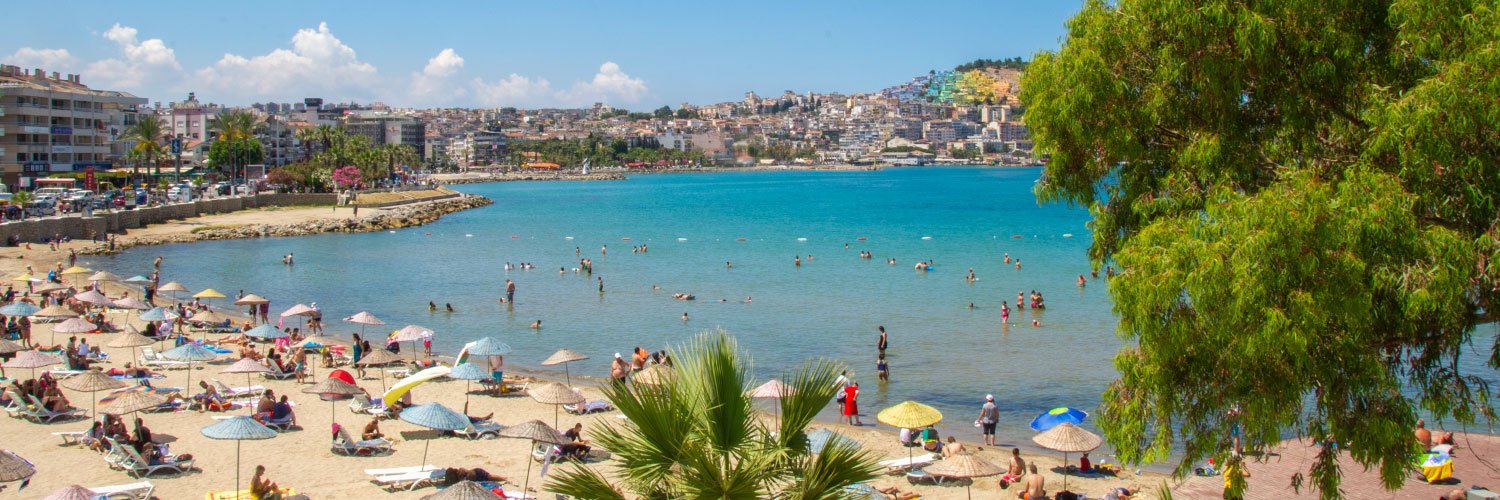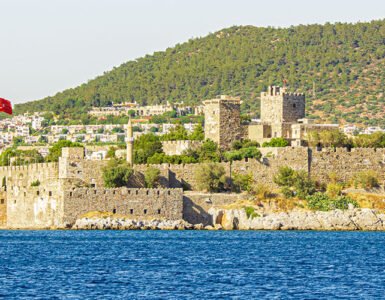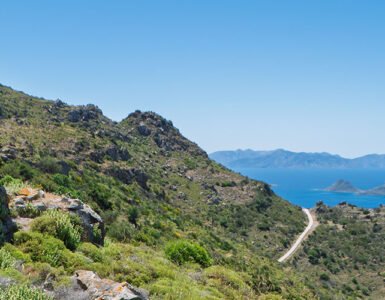With its warm breezes, sunny scenery, and rich agricultural traditions, the Mediterranean climate has fascinated inhabitants and scientists as well as travellers and holiday makers for a long time. While it’s commonly seen around the Mediterranean Sea, its influence reaches far beyond, to a geographic zone known as the Mediterranean basin.
The Mediterranean climate is a subtropical climate with its wet, mild winters and hot, dry summers. This specific climate type is often associated with the most charming places in the world such as French Riviera, the coastal areas of California, Greece, and the Mediterranean and Aegean coasts of Turkey. The distinct seasonal changes in Bodrum’s weather serve as a typical example for this climatic gem.
This pleasant and delightful climate pattern creates a wonderful setting for year-round outdoor activities, flourishing agriculture, and a variety of ecosystem. It is the essence of the Aegean Spirit. The Mediterranean climate is not only a geographic feature but also a cultural and environmental treasure that has shaped the lives of its inhabitants and changed the world’s perception of leisure and cuisine.
On this page
What Makes the Mediterranean Climate So Special?
The Mediterranean climate gets its name from the Mediterranean region, where it is most commonly found. It is a pleasant type of climate for people enjoying outdoor activities, while it is an interesting phenomenon for scientists studying global warming.
Warm and sunny summers are one of the key features of the Mediterranean weather. The temperatures during this season can be quite high, averaging from 25ºC to 35ºC. The abundance of sunshine in summer months is one of the reasons why so many people flock to Mediterranean destinations for their vacations.

Winters, on the other hand, are relatively mild and wet. The temperatures vary between 10ºC to 15ºC, rarely dropping below freezing. Rainfall is more common, helping to keep the landscape green and lush. The mild temperatures and rainfall make the Mediterranean climate ideal for growing a variety of crops like olives, grapes, and citrus fruits.
The transition between summer and winter is another outstanding feature of the Mediterranean weather. Spring and autumn usually have milder temperatures and less rainfall compared to summer and winter. September and October, when the sea temperatures are still high, are usually part of the summer season. I don’t know about other parts of the Mediterranean zone, but locals call these months yellow summer in Bodrum.
As people with common sense on the planet are searching for a cure for the impacts of climate change, understanding the Mediterranean climate becomes crucial for humanity. This region is particularly vulnerable to the effects of global warming. Changing rainfall patterns, increasing wildfires and drought risk, and decreasing agricultural sustainability are common concerns shared by all countries in the Mediterranean map.
Cradle of Civilization: The Mediterranean Basin
The Mediterranean Basin, also known as the Mediterranean, is a region that includes parts of Southern Europe, Western Asia, and North Africa, surrounding the Mediterranean Sea. It is known for its mild and pleasant climate, beautiful landscapes, and rich history and culture.
The Mediterranean climate refers to the typical weather conditions which are seen along the coastal regions of the countries in the Mediterranean Basin. The countries that form the Mediterranean are:
Europe continent:
- Portugal
- Spain
- France
- Italy
- Malta
- Greece
- Turkey
- Cyprus
- Northern Cyprus
Asia continent:
- Turkey
- Syria
- Lebanon
- Israel
- Jordan
Africa continent:
- Egypt
- Libya
- Tunisia
- Algeria
- Morocco

As mentioned before, hot, dry summers and wet, mild winters define the region’s climate. These features make the countries in the basin popular destinations for tourists and travellers.
In historical point of view, the Mediterranean Basin has been a cradle for civilization. Many ancient cultures and empires, including the Greeks, Romans, Phoenicians, Egyptians, Persians, Hittites, and others, rose and fell in this area. This rich history has left its mark on the basin’s art, architecture, cuisine, and lifestyle.
Mediterranean Heat All Over the World
The Mediterranean climate has unique features that are mainly found in the Mediterranean Basin. However, these characteristics also extend to other regions known as the Mediterranean Zone. The Mediterranean Basin lies between the 30th and 45th north latitudes, and coastal areas within this range exhibit similar climatic conditions. This pattern can also be observed in the southern hemisphere, specifically between the 30th and 45th south latitudes.
Other countries showing resembling weather features in the Mediterranean Climate Zone are:
- Coastal areas of California in the United States, cities like Los Angeles and San Diego,
- Central Chile, including Santiago and Valparaiso,
- Southwestern Australia, particularly Perth and surroundings,
- Southwestern South Africa, Western Cape region including Cape Town,
- Argentina, specifically the Mendoza area,
- New Zealand, the Marlborough region.

In my opinion, within all Aegean and Mediterranean coasts of Turkey, which reflect the Mediterranean Climate, Bodrum has better weather. I am not a fan of high temperatures and I always complain about it when it exceeds 40ºC in Bodrum. I like to walk, hike, take pictures and none of them are easy in those temperatures. On the other hand, Antalya, another popular destination in the Mediterranean Region of Turkey, is 5ºC hotter than Bodrum on average in summers! That’s just too much for me.
Turkey’s Mediterranean Climate
Turkey has a vast geographical diversity. As we Turks say all the time, it is a country where you can experience four seasons at the same time. This diversity also brings various climate types. However, the Mediterranean climate significantly influences the weather of the southern and southwestern coasts, including weather in Bodrum.

Turkey’s southwestern coast, the coastal line between Antalya and Izmir, are where the Mediterranean climate is more prominent than rest of the southern and western coasts. As you move through the east from Antalya, the temperature gets higher and rainfall decreases. As you move to the north from Izmir toward Istanbul, average temperatures decrease while the rainfall increases. This is the reason why some beautiful destinations at the north Aegean, such as Ayvalik, is not as popular as Bodrum, Marmaris, or Fethiye. Because in the north Aegean, the swimming season is as short as 3 months compared to Bodrum’s 5-6 months due to lower temperatures.
Winters in the Mediterranean are mild, with temperatures rarely falling below 15ºC. Rainfall is more frequent in this season, keeping the region’s natural beauty and providing essential water resources for the environment and people. The pleasant winter climate makes Bodrum and other destinations in the area attractive places for those looking for a milder alternative to colder northern regions of Turkey.
Challenges of Living in the Mediterranean Zone
The Mediterranean climate has many advantages for the regions it affects. The pleasant winters and mild temperatures create an ideal environment for tourism, which contributes to the local economy. Additionally, this climate supports a wide range of vegetation growth, making the region rich in agriculture.
However, this unique climate can also be challenging. The hot and dry summers can result in scarce water supplies, threatening both agriculture and residents. Bodrum, for instance, faces significant water problems. The reservoir in Mumcular supplies Bodrum, and the water level of the dam is usually around 20-30%, which is quite concerning. Activists, including myself, have been urging the authorities to halt new construction projects, especially new golf hotels in Bodrum, but we haven’t gotten any results so far.

Another challenge caused by the Mediterranean climate is the increasing risk of wildfires. In July 2021, wildfires swept across a large area from Marmaris to Bodrum, resulting in the loss of 52,020 hectares of forested lands in just 15 days.
Nevertheless, we know we can overcome all these challenges with determination and scientific approach. With the support of individuals like you, I sincerely hope that we can form public opinion to address and resolve these issues in the near future.







Add comment